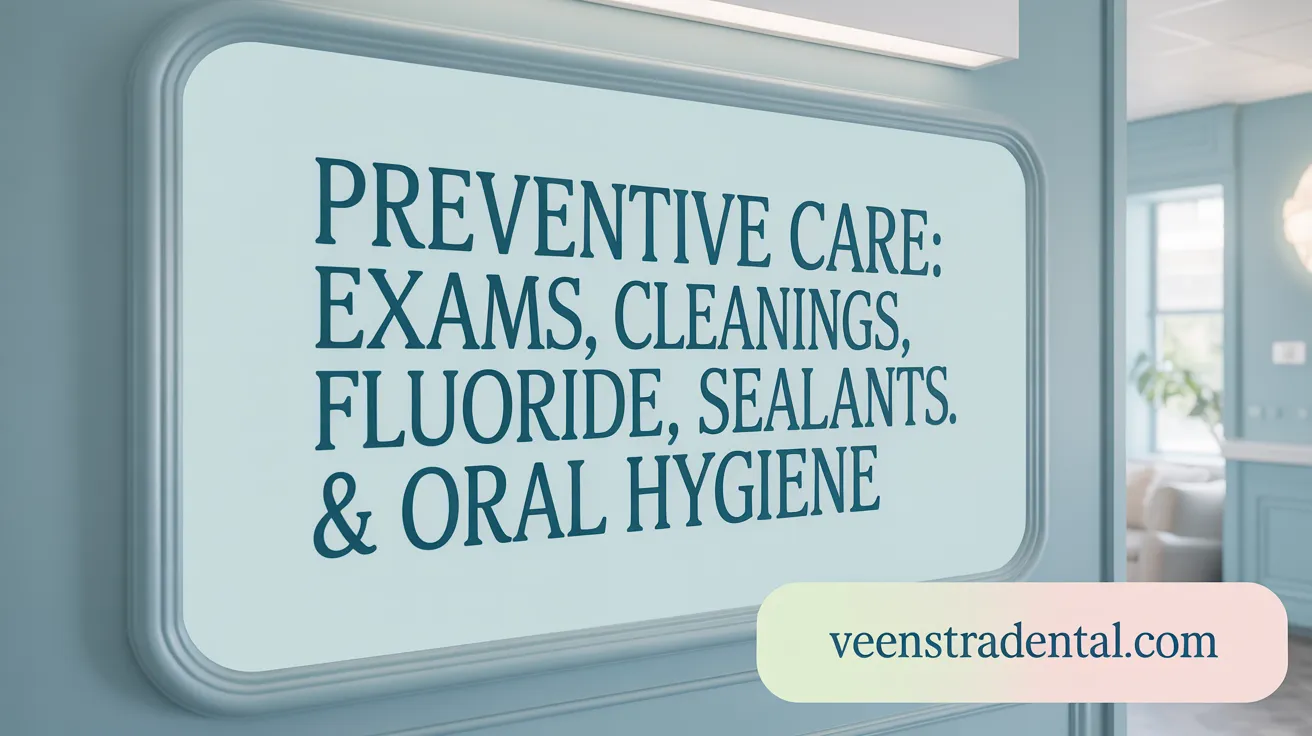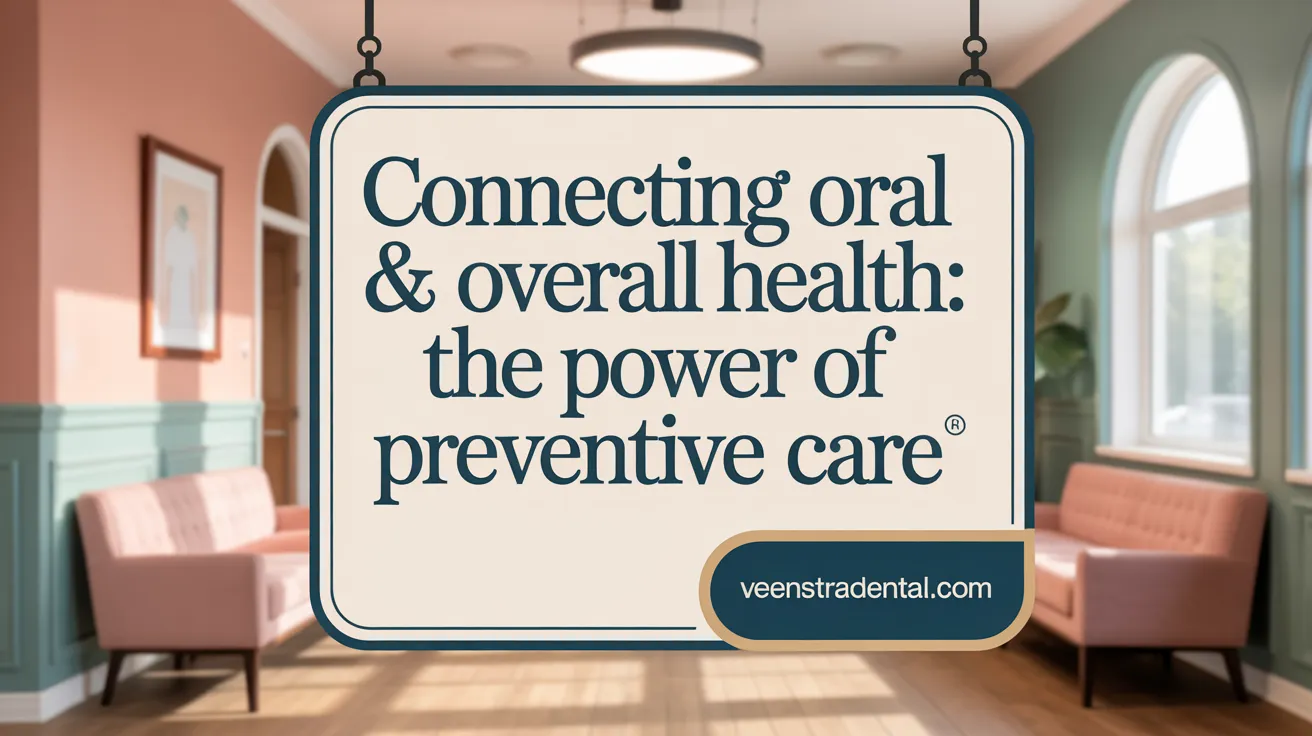Understanding Preventive Dentistry and Its Lasting Impact
Preventive dentistry encompasses a range of professional and at-home practices aimed at maintaining oral health and preventing dental diseases before they arise. By focusing on early detection, routine care, and education, preventive dentistry plays a pivotal role in preserving healthy teeth and gums throughout all stages of life. This article explores the essential components of preventive care, highlights its benefits beyond just oral health, and illustrates how lifelong commitment to these practices can enhance overall well-being and quality of life.
Core Practices and Professional Services in Preventive Dentistry

What are the main components of preventive dentistry?
Preventive dentistry is centered on several foundational practices and professional services that work together to maintain oral health and prevent disease. Regular dental check-ups, typically every six months, are essential for early detection of cavities, gum disease, and oral cancer. These visits include thorough examinations and the use of diagnostic tools such as digital X-rays, which offer reduced radiation exposure and enhanced accuracy in spotting hidden issues.
Professional cleanings during these visits effectively remove plaque and tartar deposits that cannot be eliminated by brushing or flossing alone. These professional cleanings reduce the risk of tooth decay and periodontal disease.
Fluoride treatments are applied to strengthen tooth enamel, making it more resistant to decay. Additionally, dental sealants —thin plastic coatings applied to the chewing surfaces of molars—help prevent cavities by sealing out food and bacteria.
At home, effective oral hygiene is crucial. This includes brushing teeth twice daily with fluoride toothpaste and flossing at least once a day to remove plaque between teeth. Patient education plays a critical role, as dentists and hygienists provide personalized advice on proper brushing and flossing techniques, along with guidance on lifestyle choices like diet and tobacco avoidance that support oral health.
Together, these components form a comprehensive approach that not only protects teeth and gums but also contributes to overall well-being.
The Vital Role of Preventive Dentistry Across the Lifespan

How does preventive dentistry benefit people at various life stages?
Preventive dentistry plays a crucial role in maintaining oral health tailored to the unique needs of different age groups.
For children, early establishment of good oral hygiene habits, including visiting the dentist by the first birthday and using protective treatments like dental sealants can effectively prevent cavities during cavity-prone years. These early interventions help form a strong foundation for lifelong oral health.
Adults benefit from preventive care that includes regular dental check-ups every six months, professional cleanings, and screenings for conditions such as gum disease and oral cancer. Maintaining rigorous oral hygiene routines such as brushing twice daily with fluoride toothpaste and daily flossing helps manage risks from lifestyle factors and chronic diseases like diabetes.
Seniors encounter age-related oral health challenges including dry mouth, gum recession, and increased susceptibility to oral cancer. Preventive dentistry for older adults involves tailored care plans, consistent monitoring, use of specialized oral hygiene tools, and frequent professional visits to maintain teeth and oral function.
Across all ages, preventive dentistry contributes significantly beyond oral health by lowering the risk of systemic diseases. Poor oral health has been associated with heart disease, diabetes, respiratory infections, and negative pregnancy outcomes. By preventing infections and inflammation in the mouth, preventive dental care promotes overall systemic health.
Promoting regular dental visits at different life stages
Regular dental visits enable early detection and management of dental issues when treatment is simpler and more effective. Dentists perform oral cancer screenings, cleanings, and provide personalized education during these visits, adapting care according to each life stage's needs.
Through consistent preventive care, individuals can maintain healthy smiles and reduce the risk of costly, invasive procedures. This lifelong approach builds confidence, improves quality of life, and supports general wellness.
These comprehensive efforts highlight the importance of preventive dentistry as a vital health strategy throughout one’s life.
Preventive Dentistry’s Impact on Overall Health and Well-being

What is the connection between preventive dentistry and overall health?
Good oral health maintained through preventive dentistry significantly influences overall health. Poor oral hygiene can result in gum disease and dental infections that may enter the bloodstream, heightening the risk of serious systemic conditions such as heart disease, stroke, complications with diabetes, and respiratory infections like pneumonia. See also oral health and systemic health.
How does preventive dentistry help prevent heart disease, diabetes, stroke, and respiratory infections?
By regularly removing plaque and tartar, and by early detection and treatment of gum disease, preventive dentistry reduces chronic oral inflammation and bacterial overload. This limits the spread of harmful bacteria from the mouth to the bloodstream, thereby decreasing the likelihood of cardiovascular problems, stroke, and worsened diabetes control. Good oral care can also reduce the risk of respiratory illnesses caused by inhaling oral bacteria. Related information can be found under oral health and systemic infections and oral health and overall health.
What is the relationship between oral health and pregnancy outcomes?
Gum disease during pregnancy has been linked to adverse outcomes such as premature birth and low birth weight. Preventive dental care during pregnancy helps manage gum inflammation and infections, supporting healthier pregnancy and fetal development. For more details, see gum disease and pregnancy outcomes.
What are the psychological and social benefits of maintaining good oral health?
Maintaining a healthy smile boosts self-confidence, improving social interactions and mental well-being. Preventing oral pain and discomfort through regular dental care also contributes to a better quality of life. These aspects are discussed under oral health and quality of life and benefits of preventive dentistry.
How does preventive dentistry reduce health costs through early interventions?
Early detection of oral issues like cavities and gum disease prevents progression to severe conditions that require costly treatments such as root canals, extractions, or hospitalization for infections. This lowers both personal healthcare expenses and overall system costs, underscoring preventive care's value beyond oral health. Learn more about the economic benefits in the value of preventive oral health care and cost-effective dental care.
At-Home Oral Care and Lifestyle Factors Supporting Prevention
What home care practices and lifestyle choices support preventive dentistry?
Effective at-home oral care is foundational for preventing dental problems. Brushing teeth twice a day with fluoride toothpaste for at least two minutes is essential. The recommended technique involves angling the toothbrush bristles at 45 degrees toward the gumline and using gentle, circular motions to clean all tooth surfaces thoroughly. Daily flossing complements brushing by removing plaque and food particles from between teeth where brushes cannot reach.
Using an alcohol-free fluoride mouthwash can further reduce harmful bacteria and enhance oral hygiene. Maintaining proper hydration and chewing sugar-free gum helps manage dry mouth, a condition that increases infection risk and tooth decay.
Diet significantly influences oral health. Limiting sugary and acidic foods and beverages reduces the production of acids that erode enamel and cause cavities. Instead, consuming a nutrient-rich, balanced diet supports healthy teeth and gums (Healthy Lifestyle Choices for Oral Health).
Lifestyle factors are also critical. Avoiding tobacco products decreases risks of gum disease and oral cancers. Excessive alcohol consumption should be limited for similar reasons (Avoiding Tobacco for Better Oral Health, Preventing Oral Cancer).
Protective devices like custom-fitted mouthguards play a vital role during contact sports to prevent dental injuries and can protect against damage from teeth grinding during sleep (Custom-fitted Mouthguards).
Together, these at-home practices and lifestyle choices form a comprehensive approach to preventive dentistry that supports lasting oral health and overall well-being.
Technological Advances Enhancing Preventive Dental Care
How have technological advances improved preventive dentistry?
Modern technology has revolutionized preventive dentistry, offering enhanced diagnostic precision and greater patient comfort. Digital X-rays play a pivotal role by exposing patients to at least 50% less radiation than traditional film X-rays. They deliver clearer, adjustable images that allow early detection of dental issues such as cavities, bone loss, and oral cancer.
Laser dentistry is another groundbreaking advancement. It enables less invasive procedures, particularly in professional cleanings and gum disease treatment. This technology reduces discomfort and accelerates healing, improving patient experience during preventive care.
Artificial intelligence (AI) diagnostics assist dentists by quickly analyzing imaging and other data to spot subtle changes or early signs of oral diseases that may be missed otherwise. This helps in crafting personalized treatment plans based on timely and accurate detection.
Salivary diagnostics represent a non-invasive, easy method to detect markers of oral and systemic diseases early, further advancing preventive strategies by catching conditions before symptoms emerge.
Professional cleaning techniques have also evolved with technology, incorporating tools like ultrasonic scalers and air-polishing devices that more effectively remove plaque and tartar, leading to better gum health.
Overall, these technological innovations contribute to improved diagnostics, less discomfort, and earlier interventions, making preventive dentistry more effective and accessible to patients of all ages.
Overcoming Barriers and Promoting Access to Preventive Dentistry
What are the challenges to preventive dental care and how can they be addressed?
Preventive dental care is essential for lifelong oral health, but several barriers often prevent people from accessing these services. Common challenges include dental fear, financial constraints, and time limitations.
Fear of dental procedures can cause patients to avoid visits; sedation options and creating a calming environment can help alleviate anxiety. Financial barriers are significant, as many individuals lack dental insurance or face high out-of-pocket costs. Expanding insurance coverage to fully include preventive services like cleanings, exams, fluoride treatments, and sealants helps reduce this obstacle. Flexible appointment scheduling and outreach programs address challenges related to limited availability or competing priorities.
Community and public health initiatives play a critical role in expanding access, especially for underserved groups. School-based fluoride varnish and sealant programs, community clinics offering affordable care, and family-focused education efforts raise awareness and lower care gaps. Programs like CO-OP Chicago and county health department partnerships provide targeted support for low-income and minority children.
Education is vital to promote positive dental experiences and emphasize preventive care’s value. Early positive encounters build lifelong habits, reduce fear, and increase compliance. Tailored patient education combined with support from health workers encourages regular visits and daily oral hygiene.
Addressing disparities requires policy reform and coordination to improve oral health equity. By ensuring access to preventive dentistry through insurance, community programs, and education, more people can enjoy good oral health and avoid costly treatment in the future. For more information, see resources on Barriers to Dental Care and Preventive Oral Health and The Value of Preventive Oral Health Care.
Embracing Preventive Dentistry for a Lifetime of Healthy Smiles
Preventive dentistry stands as a cornerstone for maintaining oral health and enhancing overall well-being across the lifespan. By combining regular professional care, effective at-home practices, mindful lifestyle choices, and leveraging technological advances, individuals can prevent many common dental diseases and detect issues early when treatment is easier and less costly. Overcoming access barriers through education, community programs, and supportive policies is essential to ensure the benefits of preventive dentistry reach all populations. Committing to these practices empowers people to enjoy healthy, confident smiles and contributes positively to their systemic health and quality of life for years to come.
